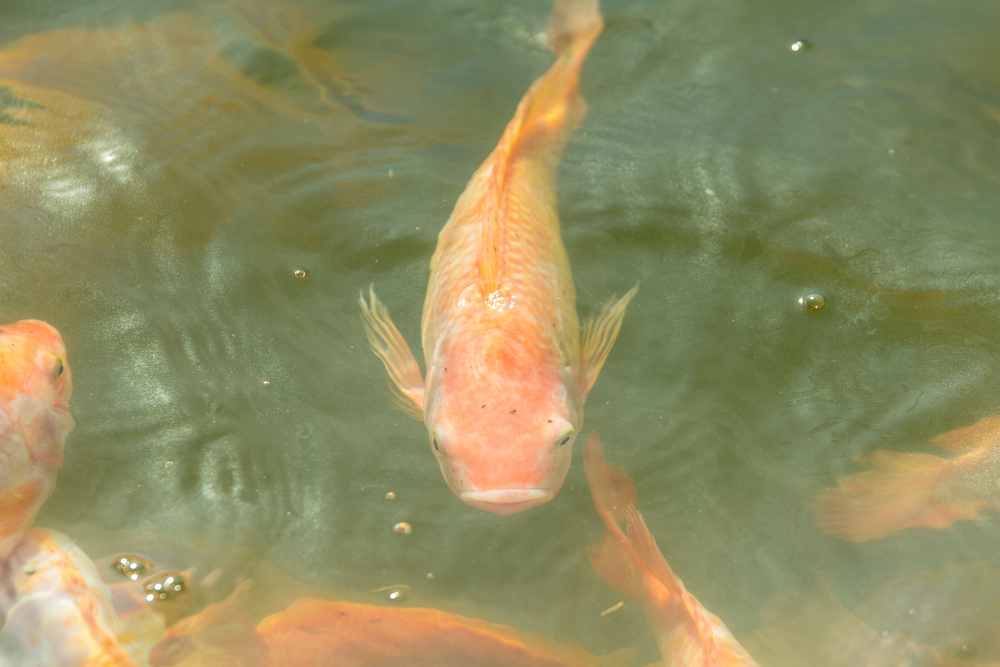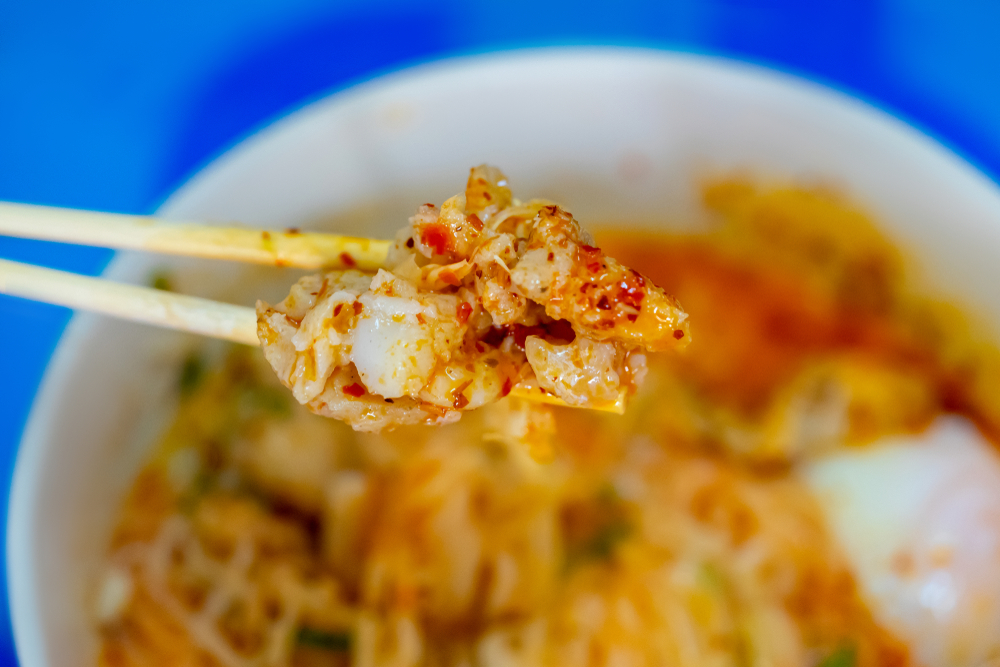Imagine enjoying a traditional Thai meal, only to find out later that it could be deadly. This scenario is not a mere scare tactic—it’s the harsh reality surrounding Koi Pla, a beloved raw fish dish consumed across Thailand, especially in the Isaan province. Despite its rich flavors, Koi Pla has come under fire due to a potentially lethal ingredient: a parasitic flatworm known as the liver fluke. In this article, we’ll uncover how this seemingly innocent dish poses a serious risk to liver health and explore the efforts being made to tackle this hidden danger.

Source: Shutterstock
What is Koi Pla? The Popular Dish with a Dark Secret
Koi Pla is a spicy dish made from raw freshwater fish, finely ground with spices, herbs, and a squeeze of lime. It’s often paired with sticky rice and enjoyed by millions of Thais. While its taste and texture have made it a local favorite, recent studies have shown that the dish may contain a dangerous parasite: the liver fluke (Opisthorchis viverrini).
The liver fluke thrives in freshwater fish found in the Mekong River region, which flows through Isaan, where Koi Pla is a culinary staple. The dish is typically served raw or undercooked, allowing the parasite to survive and infect those who consume it. This hidden threat has raised alarm among health experts, including Dr. Narong Khuntikeo, a liver surgeon who has dedicated his life to battling the health crisis caused by liver flukes.
How Liver Flukes Enter Your Body Through Koi Pla
At first glance, it’s hard to believe that a small parasitic worm could cause life-threatening harm. However, the liver fluke has a complex life cycle that makes it extremely effective at infecting humans. Here’s how it works:
- Snails as the Starting Point: The life cycle begins when the liver fluke’s eggs are released into freshwater bodies, where they infect snails.
- Fish as Intermediate Hosts: Fish then feed on infected snails, ingesting the parasite’s larvae.
- Humans as Final Hosts: When people consume raw or undercooked fish, they become the parasite’s final hosts.
Once inside the human body, the flukes migrate to the liver, where they latch onto the bile ducts. They can live there for years, silently causing inflammation, scarring, and eventually leading to serious liver conditions like cirrhosis or liver cancer.
The Health Consequences: From Fluke to Liver Cancer
The liver fluke may be tiny, but its impact is anything but small. Upon entering the liver, the parasite begins to feed on bile, causing chronic inflammation. This inflammation can lead to liver damage over time. As the liver tissue becomes scarred and hardened, a condition known as fibrosis, the risk of developing hepatocellular carcinoma (a common type of liver cancer) increases significantly.
In Thailand, liver cancer is one of the leading causes of death, particularly in Isaan, where Koi Pla is widely consumed. The slow and silent nature of liver fluke infection often delays diagnosis, allowing the disease to progress unnoticed for years. By the time symptoms like abdominal pain, jaundice, or digestive issues appear, liver damage is often advanced, making treatment difficult.

Source: Shutterstock
Dr. Narong Khuntikeo’s Crusade Against Koi Pla
At the forefront of the fight against Koi Pla and liver fluke infections is Dr. Narong Khuntikeo, a liver surgeon from Thailand who lost both of his parents to liver cancer. Driven by personal tragedy, Dr. Khuntikeo has become a leading advocate for liver cancer prevention, particularly in Isaan. He has dedicated his career to raising awareness about the risks of consuming raw fish, conducting screenings, and promoting early detection of liver fluke infections.
“It’s a very big health burden around here,” Dr. Khuntikeo says. “But nobody knows about this because they die quietly, like leaves falling from a tree.” He has been traveling through Isaan with a team of medical experts, using ultrasound machines and urine tests to detect liver fluke infections in local villagers. Shockingly, up to 80% of some communities were found to have liver flukes in their system.
Efforts to Combat Liver Fluke Infections in Thailand
To address the rising health concerns, Thai authorities have implemented several measures aimed at reducing liver fluke infections:
- Education Campaigns in Schools: To break the cycle of Koi Pla consumption, health officials have launched education programs targeting schoolchildren. By teaching younger generations about the risks of eating raw fish, they hope to lower infection rates over time.
- Community Health Screenings: Free liver screenings are offered in high-risk areas, helping to identify infected individuals early and provide treatment before liver damage becomes severe.
- Improved Sanitation and Food Handling: Local governments have enforced stricter guidelines on food preparation, promoting thorough cooking methods to kill liver flukes before consumption.
- Regional Collaboration: Thailand has partnered with neighboring countries in the Mekong region to tackle the broader issue of liver fluke infections at the source, targeting both fish populations and the general public’s consumption habits.
Why People Still Eat Koi Pla Despite the Risks
Despite the known health risks, Koi Pla remains popular in many Thai communities. Several factors contribute to this ongoing consumption:
- Cultural Tradition: For many people in Isaan, eating Koi Pla is more than just a meal—it’s a part of cultural identity and local cuisine. The dish is often prepared during family gatherings, celebrations, and religious events.
- Lack of Awareness: In remote areas, information about the dangers of liver flukes may not be widespread, leading people to underestimate the risk.
- Economic Factors: In poorer communities, freshwater fish are a cheap and accessible source of protein, making Koi Pla a practical food choice despite the health hazards.
A Shift Toward Safer Eating Habits

Source: Shutterstock
To reduce liver fluke infections and liver cancer rates, changing eating habits is essential. Experts suggest several safer alternatives:
- Cooked Fish Dishes: Steaming, grilling, or boiling fish is highly effective in killing liver fluke larvae, eliminating the risk of infection while preserving the traditional flavors of Thai cuisine.
- Fermented Fish Options: Fermented fish dishes, like Pla Ra, undergo a process that neutralizes parasites, making them a safer choice than raw fish dishes like Koi Pla.
Conclusion: The Battle Against Koi Pla Continues
Koi Pla, with its intense flavors and deep cultural roots, has become a symbol of a hidden health crisis in Thailand. The dish’s connection to liver cancer, driven by the liver fluke parasite, has prompted doctors like Dr. Narong Khuntikeo to spearhead efforts for awareness, education, and prevention. While the challenge remains, ongoing campaigns to educate the public, improve sanitation, and offer alternatives signal hope for a healthier future. Understanding the risks and making informed choices can help preserve both tradition and well-being.


